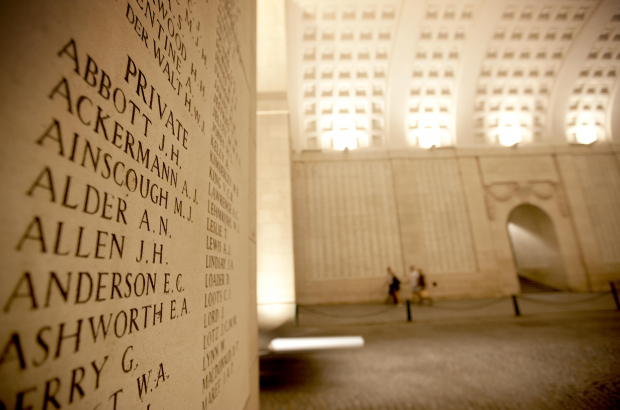- Daily & Weekly newsletters
- Buy & download The Bulletin
- Comment on our articles
Menin Gate memorial marks 90 years of honouring missing soldiers
Every evening at 20.00, the traffic passing through the Menin Gate in Ypres is halted to allow a short, yet poignant ceremony to take place. The Last Post is played by local buglers to remember those who lost their lives during the First World War.
The Menin Gate was chosen as the location of this ceremony, which has been staged every evening – apart from during the Second World War – since 1929, because it was from this spot that countless thousands of soldiers set off for the front. As we know, all too few made the return journey.
In the middle ages, what was to become the Menin Gate was called the Hangwaertpoort and was a narrow gateway on the eastern side of the town. By the outbreak of the First World War in August 1914, the gateway had become known as the Menenpoort, because it marked the start of the road leading to the town of Menen, about 16 kilometres away.
During the war, this road became known to the British Army as the Menin Road, and the gateway was called the Menin Gate. The gate was guarded by two stone lions, which in 1936 were donated to Australia by the mayor of Ypres as a gesture of friendship and an acknowledgement of the sacrifices of Australia’s soldiers.
Earlier this year, as part of the 100th anniversary commemorations of the Third Battle of Ypres, the lions were returned to their symbolic home at the Menin Gate. Here they will stand on display before being returned to the Australian War Memorial after Armistice Day, 11 November.
Against the odds
During the war, Ypres suffered considerable damage, and the Menin Gate was not left unscathed. Most notably, in the spring of 1915 an intensive German bombardment on the town was carried out by long range, heavy German artillery, including the huge 42cm howitzer nicknamed Big Bertha by the British Army.
By 1917, German artillery shelling had laid waste to much of Ypres, although photographs show the Menin Gate still standing, if only just.
The Menin Gate Memorial to the Missing was inaugurated on Sunday, 24 July 1927 by Field Marshal Lord Plumer in the presence of King Albert, General Foch of France, hundreds of local inhabitants, veterans of the First World War and relatives of fallen soldiers. The ceremony was also broadcast on the radio in the UK, allowing millions to listen in.
The memorial bears the names of 54,389 officers and soldiers who fell in the Ypres Salient before 16 August 1917 and whose graves are unknown. The names are engraved in Portland Stone panels fixed to the inner walls of the central Hall of Memory, to the sides of the staircases leading to the upper exterior level and on the walls on the north and south sides of the structure.
Sounding of Last Post
At the end of the inauguration service, buglers of the Somerset Light Infantry sounded the Last Post. This was repeated the following year, although the daily sounding of the Last Post didn’t start until 11 November 1929.
From then, the Last Post has been sounded at the Menin Gate Memorial every night and in all weathers. The only exception was during the German occupation of Ypres from May 1940 to September 1944, when the ceremony was held at the Brookwood Military Cemetery in England.
The ceremony resumed at the Menin Gate on the evening that Polish forces liberated Ypres, in spite of heavy fighting still going on in other parts of the town.
On 24 July at 11.00, a special ceremony organised by the Commonwealth War Graves Commission will mark the 90th anniversary of the unveiling of the Menin Gate Memorial. The ceremony is open to everyone; guests are asked to arrive half an hour before it begins.
24 July 11:00, Menenstraat, Ypres










Comments
Amid the war, this street wound up plainly referred to the British Army as the Menin Road, and the portal was known as the Menin Gate. The door was protected by two stone lions, which in 1936 were given to Australia by the chairman of Ypres as a motion of fellowship and an affirmation of the penances of Australia's warriors. Dissertation Service Prior this year, as a major aspect of the 100th commemoration celebrations of the Third Battle of Ypres, the lions were come back to their emblematic home at the Menin Gate. Here they will remain in plain view before being come back to the Australian War Memorial after Armistice Day, 11 November.